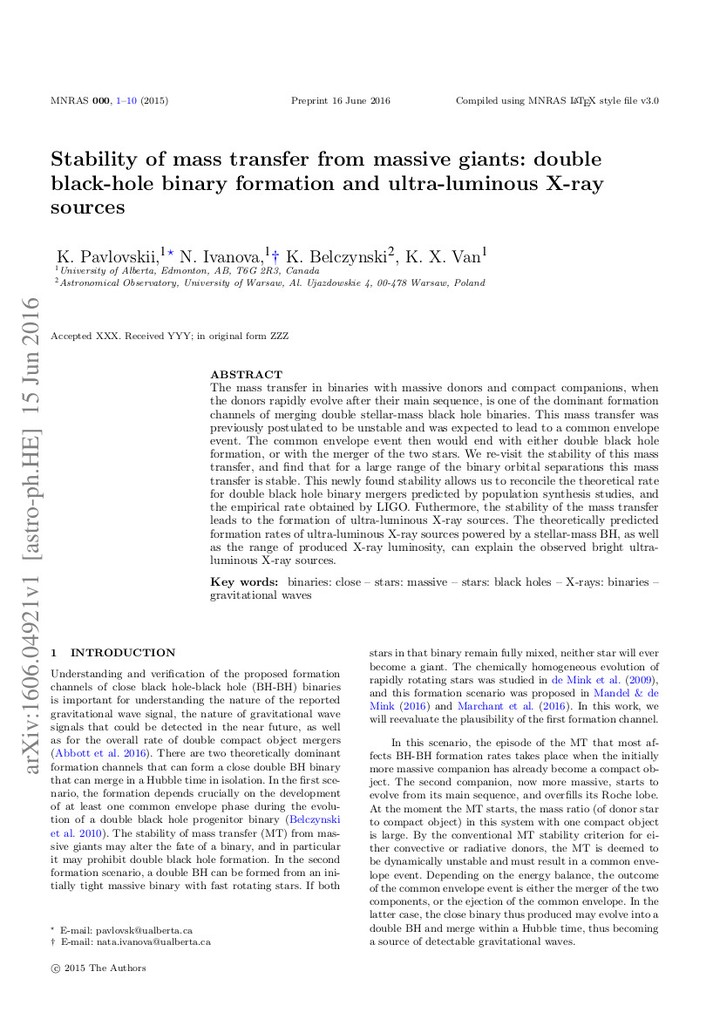Stability of mass transfer from massive giants: double black hole binary formation and ultraluminous X-ray sources

Abstract
Mass transfer in binaries with massive donors and compact companions, when the donors rapidly evolve after their main sequence, determines the formation rates of merging double stellar-mass black hole (BH) binaries formed outside clusters. This mass transfer was previously postulated to be unstable and was expected to lead to a common envelope event. The common envelope event then ends with either the merger of the two stars or formation of a binary that eventually may become a merging double BH. We revisit the stability of this mass transfer and find an unanticipated third outcome: for a large range of binary orbital separations, this mass transfer is stable. This newly found stability allows us to reconcile the empirical rate obtained by LIGO, 9-240 Gpc$^{-3}$ yr$^{-1}$, with the theoretical rate for double BH binary mergers predicted by population synthesis studies by excluding a channel that predicts a merger rate above 1000 Gpc$^{-3}$ yr$^{-1}$. Furthermore, the stability of the mass transfer leads to the formation of ultraluminous X-ray sources. The theoretically predicted formation rates of bright ultraluminous X-ray sources powered by a stellar-mass BH are high enough to explain the number of observed bright ultraluminous X-ray sources.